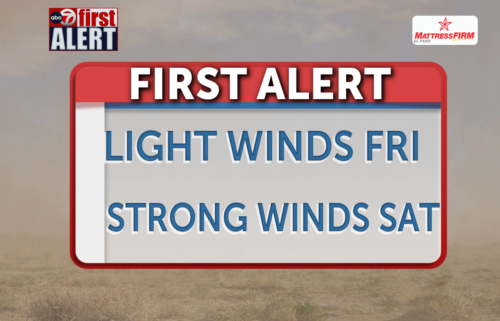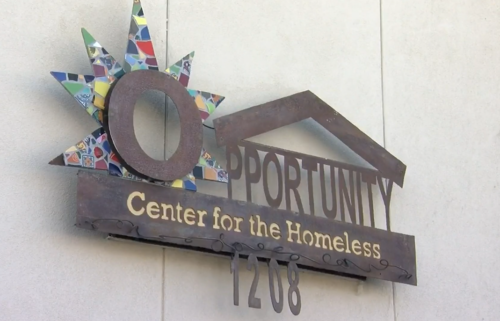As Trump touts his border wall, Los Angeles unveils a monument to migrants

A migrant father stands tall beside his wife and child in a new monument in downtown Los Angeles.
City Councilman Jose Huizar says the 19-foot-tall sculpture, unveiled Sunday near the city’s historic Olvera Street, is the first monument to honor the Mexican migrants known as braceros — a group, he says, that officials feel is particularly important to recognize.
“Their story hasn’t been told,” he says.
Millions of guest workers came to the United States from Mexico under a government program that lasted for decades. They were known as braceros — a term for manual laborers stemming from “brazo,” the Spanish word for “arm.”
The program began with an executive order issued in 1942 amid World War II-era labor shortages and ended in 1964, according to the Bracero History Archive.
It’s a story Huizar says he knows well. His family lived it.
“My father was a bracero. All my uncles were braceros. And they tell me many stories of the time they would come. They tell me about the sacrifices they made, sometimes they would go without water during the day, the barracks they put them in, terrible barracks, the living conditions were horrible,” he says. “But despite these sacrifices, they were appreciative of the opportunity, because they were able to get a little money, (and) send it back to their families.”
The braceros‘ story is also personal for the artist behind the monument, Dan Medina.
“My stepfather, who pretty much raised me and taught me the work ethic and everything I am today, he was a bracero,” Medina told CNN en Español.
Speaking from his studio last week, Medina said the sculpture has an even bigger message than the story of braceros themselves: “being able to talk about the immigrant, their contributions then, and now, and tomorrow.”
Leobardo Villa says he sees himself in Medina’s sculpture. The 85-year-old first came to the United States as a bracero working in California’s tomato fields decades ago. Every day they’d start before dawn and work until 7 p.m., he says. His uncle would tell them to stay in the fields “until the crickets started to chirp.”
“It was very difficult for people who weren’t used to working in the fields,” he says. “They got blisters on their hands.”
Another ex-bracero, 82-year-old Ramon Zapata, says the mother and child depicted in the monument speak to him.
“It was so difficult to leave your family alone,” says Zapata, who came to the US as part of the program three times, picking cotton and harvesting tomatoes in California and working in fields in Colorado.
The monument’s unveiling comes after months of sparring over immigration between the Trump administration and various California jurisdictions — many of which argue that the federal government is going too far in its efforts to crack down on illegal immigration and limit legal immigration to the United States.
Huizar, who helped secure funding for the project and has been working on it with community leaders for years, says plans for the statue began long before President Trump took office. But the monument’s unveiling, he says, couldn’t have come at a more perfect time.
“We’re now sending a message, despite what the President’s doing, we’re moving forward. You can have your rhetoric that is anti-immigrant, that is counter to what the city of Los Angeles believes in,” he said. “We’re moving forward as a city of immigrants, proud of our roots.”


